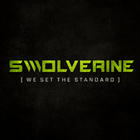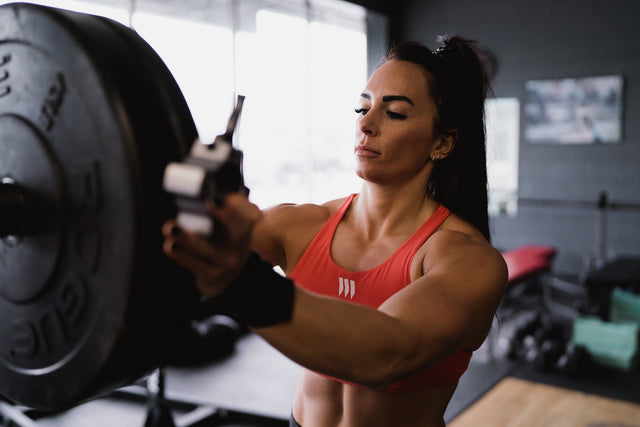In the realm of hormonal performance, two titans stand head and shoulders above the rest: testosterone and halotestin. While testosterone is often celebrated for its essential role in building muscle and enhancing vitality, halotestin offers a different edge, delivering intense strength and explosive power. Athletes and fitness enthusiasts frequently weigh their options, each compound presenting unique advantages tailored to specific goals. But how do these power players compare when it comes to enhancing performance? In this article, we’ll dive deep into the characteristics, benefits, and potential drawbacks of testosterone and halotestin.
Whether you're aiming for peak performance in the gym or simply seeking to understand these hormonal heavyweights, prepare for an enlightening exploration that uncovers which option may reign supreme for your needs.
Get ready to unveil the truth behind Testosterone vs Halotestin and discover how they can transform your approach to fitness and athletic achievement.
Understanding Testosterone: The Key Hormone
Testosterone is often hailed as the cornerstone of male vitality and physical prowess. It's a vital hormone that plays an instrumental role in developing male reproductive tissues, such as the testes and prostate, as well as promoting secondary sexual characteristics like increased muscle and bone mass. Although predominantly associated with males, testosterone is also present in females, albeit in smaller amounts, where it serves crucial functions in maintaining bone density and muscle strength.
Produced primarily in the testes in men and the ovaries in women—with smaller amounts produced by the adrenal glands—testosterone is integral to overall health and well-being. It influences mood, energy levels, and libido, making it a critical element not just for physical performance but also for mental and emotional health. The hormone operates through binding to androgen receptors, which then activate specific genes that drive growth and development processes.
“Testosterone plays a key role in muscle mass, fat distribution, and bone density, and is essential for healthy sexual function in both men and women.” — Mayo Clinic, Dr. Todd B. Nippoldt
Testosterone and Performance Enhancement
In the context of sports and bodybuilding, testosterone’s anabolic properties are particularly noteworthy. It promotes muscle protein synthesis, a key process in repairing and building muscle tissue following resistance training. This makes it a popular compound among athletes and bodybuilders aiming to maximize hypertrophy and strength gains.
Additionally, testosterone stimulates red blood cell production, enhancing oxygen delivery to working muscles, which can improve endurance and reduce fatigue during high-intensity training sessions. Its ability to enhance both recovery and performance has made it a foundational component in many anabolic steroid stacks.
“Testosterone significantly contributes to erythropoiesis, muscle hypertrophy, and neuromuscular adaptations essential for athletic performance.” — Bhasin et al., The New England Journal of Medicine
Halotestin: A Closer Look at the Anabolic Steroid
Halotestin, known chemically as fluoxymesterone, is a synthetic anabolic steroid prized for its ability to deliver extraordinary strength and aggression. Unlike testosterone, Halotestin is modified to maximize anabolic effects while minimizing some androgenic traits, making it a choice steroid for elite athletes in power-based or combat sports.
Mechanism of Action and Benefits
Halotestin binds strongly to androgen receptors, even more so than natural testosterone, enhancing both nitrogen retention and muscle protein synthesis. Users often report rapid increases in strength, muscle density, and workout aggression within short cycles. This makes Halotestin especially effective for pre-competition conditioning phases or when an athlete needs a sharp performance edge.
“Fluoxymesterone is among the most potent oral anabolic steroids for increasing strength without substantial weight gain, often favored by strength athletes.” — Llewellyn, Anabolics
Risks and Considerations
Despite its power, Halotestin is hepatotoxic, meaning it places a significant burden on the liver, particularly at higher doses or with extended use. It may also negatively alter lipid profiles, increasing LDL (bad cholesterol) and decreasing HDL (good cholesterol), thereby elevating cardiovascular risk.
“Halotestin is associated with marked hepatic strain and unfavorable lipid changes, warranting caution and limited cycle lengths.” — Kanayama et al., Journal of the American Heart Association
Other side effects may include mood swings, increased aggression, and testosterone suppression. As with any anabolic steroid, post-cycle therapy (PCT) is essential to help restore natural hormone production after discontinuation.
Mechanisms of Action: How Testosterone and Halotestin Work
Understanding how testosterone and Halotestin work requires exploring their distinct interactions at the molecular level and how they influence physical performance and body composition.
How Testosterone Works
Testosterone binds to androgen receptors in muscle cells, triggering a genetic cascade that increases muscle protein synthesis. This cellular activity is essential for muscle repair, growth, and enhanced training recovery. Additionally, testosterone stimulates the production of insulin-like growth factor 1 (IGF-1), a powerful anabolic hormone that promotes further hypertrophy.
“Testosterone stimulates skeletal muscle protein synthesis by enhancing the transcription of androgen-responsive genes and increasing IGF-1 levels.” — Bhasin et al., Journal of Clinical Endocrinology & Metabolism
Testosterone also enhances erythropoiesis, or red blood cell production, improving oxygen delivery and utilization in working muscles. This contributes significantly to greater endurance, stamina, and cardiovascular performance, making testosterone valuable across a wide range of athletic disciplines.
How Halotestin Works
Halotestin (fluoxymesterone) exerts its effects by binding with higher affinity to androgen receptors compared to testosterone. This increased receptor binding leads to amplified anabolic signaling, improving nitrogen retention, muscle density, and explosive strength output.
“Fluoxymesterone has a high anabolic to androgenic ratio, producing dramatic strength gains and aggressive training drive in a short period.” — Llewellyn, Anabolics
Halotestin also enhances aggression and mental focus, giving athletes a psychological edge during intense training and competition. However, this can also lead to irritability or behavioral changes, making its use a double-edged sword in some cases.
Benefits of Testosterone for Performance Enhancement
The advantages of testosterone go far beyond aesthetics. Its impact on the body is comprehensive, supporting both physical performance and mental well-being.
Physical Benefits
-
Muscle Growth & Strength: Testosterone boosts muscle fiber hypertrophy via increased protein synthesis and nitrogen retention.
-
Recovery Enhancement: Faster tissue repair post-training enables higher training frequency and intensity.
-
Endurance Support: Increased red blood cells improve oxygen efficiency and stamina.
-
Injury Prevention: Enhanced bone mineral density helps reduce the risk of fractures in high-impact sports.
“Testosterone therapy has shown to improve lean body mass, strength, and bone mineral density in hypogonadal men.” — Basaria, New England Journal of Medicine
Mental and Psychological Benefits
-
Mood Stabilization: Testosterone plays a role in regulating neurotransmitters linked to mood and motivation.
-
Improved Focus: Athletes often report heightened mental clarity and cognitive performance.
-
Motivation & Drive: Elevated testosterone levels are associated with competitive behavior and greater training adherence.
“Low testosterone is linked with depressed mood, irritability, and decreased cognitive function.” — Zarrouf et al., Journal of Psychiatric Practice
The Role of Halotestin in Athletic Performance
Halotestin holds a unique niche in the anabolic steroid world due to its extreme potency and fast-acting nature.
Key Performance Benefits
-
Explosive Strength Gains: Halotestin delivers rapid increases in strength and aggression, particularly useful in sports like powerlifting and MMA.
-
Muscle Hardness and Density: Its non-aromatizing nature results in a dry, chiseled physique with no water retention.
-
Aggression and Competitive Edge: Halotestin can increase assertiveness and focus, making it a go-to compound during pre-competition phases.
“Fluoxymesterone enhances power and aggression, often used by athletes for short bursts of performance output.” — Kicman, British Journal of Pharmacology
Risks and Considerations
Despite its benefits, Halotestin is one of the most hepatotoxic oral steroids, making it unsuitable for long-term use or high dosages. It also negatively affects cholesterol levels, significantly increasing cardiovascular risk.
“Halotestin causes profound reductions in HDL and elevations in LDL cholesterol, increasing atherosclerotic risk.” — Hartgens & Kuipers, Sports Medicine
Careful monitoring and short-duration cycles are recommended to reduce health risks. Liver support supplements (e.g., milk thistle, NAC) and a proper post-cycle therapy (PCT) protocol are critical for minimizing long-term damage and hormonal suppression.
Side Effects and Risks of Testosterone and Halotestin
While testosterone and Halotestin offer powerful performance-enhancing effects, their use comes with significant risks. These risks vary in severity depending on dosage, duration, user physiology, and whether the substances are used under medical supervision or recreationally.
Side Effects of Testosterone
When used improperly or in supraphysiological doses, testosterone can cause a range of side effects:
-
Gynecomastia: Caused by the aromatization of testosterone into estrogen.
-
Water retention and bloating: Especially common when estrogen levels rise.
-
Acne and oily skin: Due to increased sebaceous gland activity.
-
Suppressed natural testosterone production: Leading to hypogonadism and fertility problems if PCT is not properly implemented.
Testosterone also affects cardiovascular health. It increases hematocrit and red blood cell count, which can raise the risk of blood clots and stroke. Additionally, it may lower HDL ("good" cholesterol) and raise LDL ("bad" cholesterol), elevating heart disease risk.
“Exogenous testosterone can increase hematocrit and potentially increase cardiovascular risk, especially in men with underlying conditions.” — Basaria et al., Journal of the American Medical Association
Psychological changes, including mood swings, irritability, and aggression, are also documented, particularly with long-term or high-dose usage.
Side Effects of Halotestin
Halotestin (fluoxymesterone) carries a more aggressive side effect profile, primarily due to its high hepatotoxicity and potency.
-
Liver toxicity: Halotestin is a 17α-alkylated oral steroid, which can place extreme stress on the liver.
-
Cholesterol imbalance: It drastically reduces HDL and elevates LDL, making cardiovascular events more likely.
-
Extreme aggression and irritability: Often referred to as "roid rage," which may affect social and mental well-being.
“Fluoxymesterone is significantly hepatotoxic and can induce cholestasis and liver enzyme elevations even at moderate doses.” — Hartgens & Kuipers, Sports Medicine
Regular liver function tests and cardiovascular monitoring are non-negotiable when using Halotestin, even in short cycles.
Post-Cycle Therapy (PCT) for Testosterone and Halotestin
Post-cycle therapy (PCT) is essential for restoring natural hormonal balance after anabolic steroid use. Without proper PCT, users risk long-term suppression of endogenous testosterone, fertility issues, and physical and psychological side effects.
Why PCT Is Crucial
-
Restores Natural Testosterone Production
-
Prevents Muscle Loss
-
Stabilizes Mood and Libido
-
Protects Long-Term Fertility
-
Minimizes Estrogenic Side Effects
“Abrupt discontinuation of anabolic steroids without PCT can lead to hypogonadism, depression, and loss of gains.” — Kanayama et al., Drug and Alcohol Dependence
PCT Protocol After Testosterone
Cycle Example:
-
Duration: 8–12 weeks
-
Dosage Range: 200–600 mg/week (injectable testosterone)
PCT Start Time:
-
Enanthate/Cypionate: Begin 14–21 days after last injection
-
Propionate: Begin 5–7 days after last injection
PCT Protocol:
| Compound | Dosage | Duration |
|---|---|---|
| Clomid (Clomiphene Citrate) | 50 mg/day | 4 weeks |
| Nolvadex (Tamoxifen Citrate) | 20 mg/day | 4 weeks |
| DHEA (Swolverine recommended) | 100 mg/day | 4–6 weeks |
| ZMT (Sleep/Recovery Support) | 6 capsules nightly | 4 weeks or ongoing |
Clomid and Nolvadex stimulate LH and FSH, prompting the testes to resume natural testosterone production. DHEA helps support overall hormonal output, and ZMT improves sleep and natural recovery.
“Tamoxifen and clomiphene are effective in restoring the hypothalamic-pituitary-gonadal axis following steroid cessation.” — Tatem et al., Fertility and Sterility
PCT Protocol After Halotestin
Cycle Example:
-
Duration: 2–4 weeks
-
Dosage Range: 10–30 mg/day (oral)
PCT Start Time:
-
Begin 3–5 days after last dose
PCT Protocol:
| Compound | Dosage | Duration |
|---|---|---|
| Nolvadex | 20–30 mg/day | 3–4 weeks |
| Clomid | 50 mg/day | Optional (only if Halotestin was stacked with other suppressive AAS) |
| Liver Support | NAC 600–1200 mg/day + Milk Thistle | 4–6 weeks |
| DHEA | 100 mg/day | 4 weeks |
| ZMT | 6 capsules nightly | 4 weeks |
Because Halotestin is highly androgenic but non-aromatizing, Nolvadex is often sufficient. However, if it was used alongside testosterone or other suppressive compounds, full PCT with Clomid is advised.
Additional Tips for Effective PCT
-
Blood Work: Get pre- and post-cycle blood panels (Total T, Free T, LH, FSH, E2, prolactin, liver enzymes, lipids)
-
Lifestyle: Prioritize sleep, hydration, whole foods, and limit alcohol
-
Training: Reduce intensity slightly during PCT to minimize stress and optimize recovery
-
Supplements: Use omega-3s, zinc, magnesium, and vitamin D3 to support hormone and immune function
“Post-cycle therapy is a vital strategy for maintaining gains and restoring homeostasis after androgen use.” — Ip et al., Medical Hypotheses
Legal Considerations: Testosterone vs. Halotestin
Understanding the legal framework of anabolic steroids is essential for any user—especially athletes subject to testing.
Legal Status of Testosterone
In most countries, testosterone is a Schedule III controlled substance, meaning it is only available via prescription. Legal medical uses include:
-
Hypogonadism treatment
-
Testosterone Replacement Therapy (TRT)
-
Delayed puberty in boys
-
Certain types of anemia
“Testosterone is legal when prescribed, but its use for performance enhancement outside medical oversight is illegal and banned in sport.” — World Anti-Doping Agency (WADA)
Using testosterone without a valid prescription may result in legal penalties, athletic suspensions, or disqualification from competition.
Legal Status of Halotestin
Halotestin has fewer approved medical applications than testosterone and is also classified as a controlled substance in the U.S. and most countries.
-
Used occasionally in treating advanced breast cancer or severe androgen deficiencies
-
Strictly regulated and banned by all major sports organizations, including WADA and USADA
Because of its limited clinical relevance and high abuse potential, Halotestin is rarely prescribed and frequently monitored in athletic testing programs.
“Halotestin is banned under all anti-doping regulations and carries legal ramifications if used without medical oversight.” — U.S. Anti-Doping Agency (USADA)
Consequences of Illegal Use
-
Fines and criminal charges for possession without prescription
-
Bans from competition for athletes in regulated sports
-
Long-term health consequences from unmonitored or counterfeit products
Choosing the Right Option for Your Goals
Deciding between testosterone and Halotestin for performance enhancement comes down to your specific goals, experience level, health status, and tolerance for risk. Each compound offers unique advantages and carries its own set of side effects and long-term considerations.
When to Choose Testosterone
Testosterone is the go-to choice for:
-
Beginner to intermediate users
-
Balanced muscle growth and recovery
-
Enhancing libido, mood, and cognitive clarity
-
Supporting longer-term athletic development
Its favorable safety profile and broader application across health and fitness goals make it ideal for general athletic performance and physique improvement.
“Testosterone replacement can significantly improve quality of life, mood, and muscle mass in men with deficiency, making it a foundational anabolic option.” — Saad et al., The Aging Male
When to Choose Halotestin
Halotestin (fluoxymesterone) is best suited for:
-
Experienced users in strength-focused disciplines
-
Short pre-competition cycles needing explosive power
-
Situations requiring increased aggression and focus
However, due to its high hepatotoxicity and cardiovascular strain, Halotestin should be reserved for short durations under medical supervision and paired with liver support and post-cycle therapy.
“Fluoxymesterone is one of the most potent oral anabolic steroids available, offering unique strength gains, but it comes with a steep tradeoff in safety.” — Kicman, British Journal of Pharmacology
Importance of Medical Guidance
Before using any hormonal enhancement:
-
Get blood work and hormone panels done
-
Monitor lipid levels, liver enzymes, and hematocrit
-
Use a properly structured PCT (Post-Cycle Therapy)
-
Avoid sourcing compounds from unregulated suppliers
Consulting with a qualified medical professional ensures you're using these compounds safely, legally, and in alignment with your long-term health.
Conclusion: Making Informed Decisions on Hormonal Enhancements
In the competitive world of fitness and performance enhancement, substances like testosterone and Halotestin can offer a significant edge. But this edge comes with responsibility.
Summary of Key Points
| Category | Testosterone | Halotestin |
|---|---|---|
| Best For | Overall performance & recovery | Rapid strength & aggression |
| Experience Level | Beginner to advanced | Advanced only |
| Form | Injectable, transdermal | Oral (hepatotoxic) |
| Risks | Suppression, cardiovascular strain | Liver toxicity, aggression, cholesterol |
| Legal Use | TRT, anemia, hormone therapy | Limited (e.g., advanced breast cancer) |
Making the right choice requires understanding not just what these compounds can do, but what they might cost you in terms of health, legality, and long-term hormonal function.
“Informed, medically guided use of anabolic agents is the only responsible path for athletes serious about their health and career longevity.” — Pope et al., The Lancet Psychiatry
Find similar articles:
Anabolics






